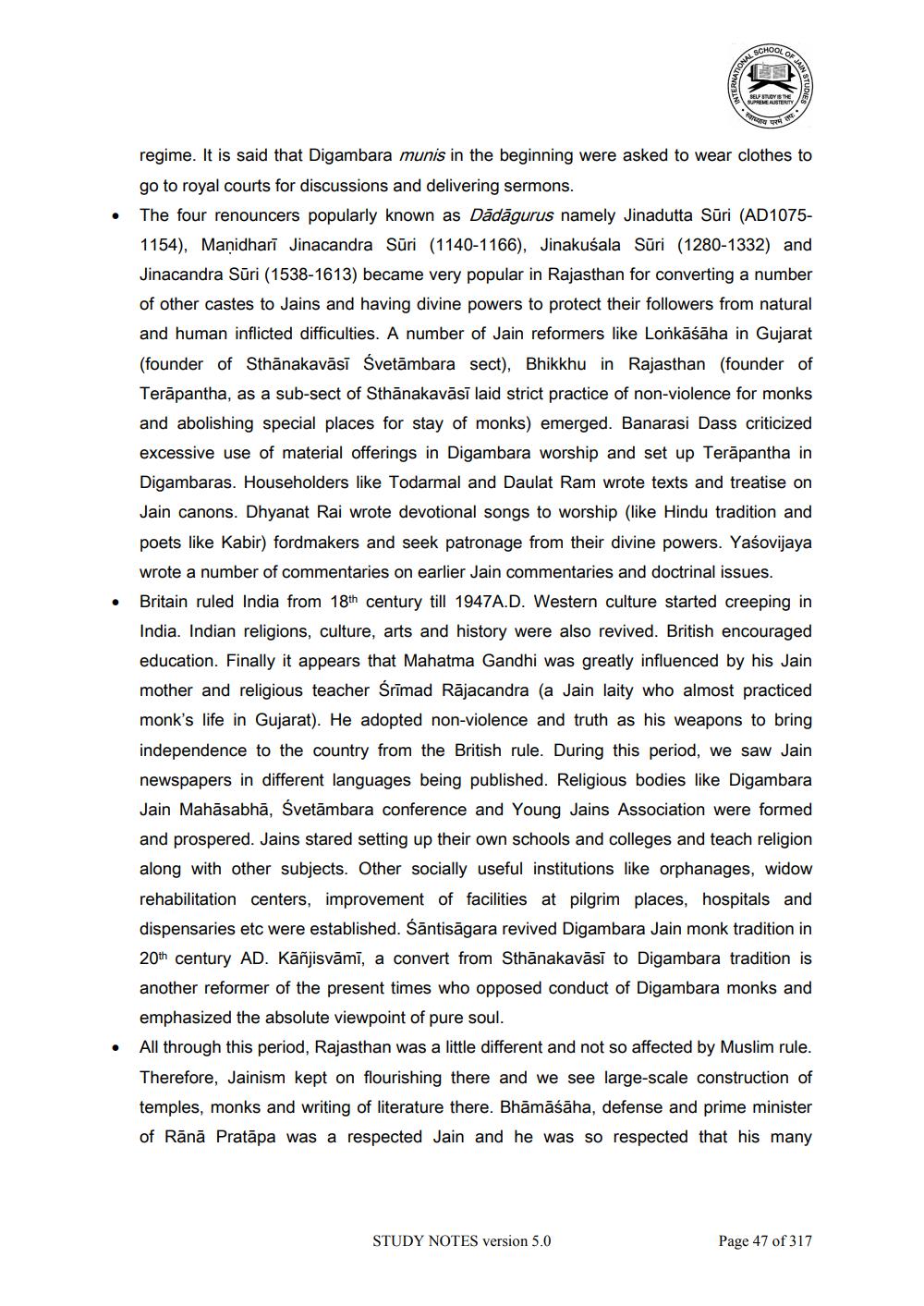________________
•
SCHOOL
OF
STUDY NOTES version 5.0
SELF STUDY IS THE SUPREME AUSTERITY
स्वाध्याय
N STUDIES
regime. It is said that Digambara munis in the beginning were asked to wear clothes to go to royal courts for discussions and delivering sermons.
• The four renouncers popularly known as Dādāgurus namely Jinadutta Sūri (AD10751154), Manidharī Jinacandra Sūri (1140-1166), Jinakušala Sūri (1280-1332) and Jinacandra Sūri (1538-1613) became very popular in Rajasthan for converting a number of other castes to Jains and having divine powers to protect their followers from natural and human inflicted difficulties. A number of Jain reformers like Lonkāśāha in Gujarat (founder of Sthanakavāsī Śvetāmbara sect), Bhikkhu in Rajasthan (founder of Terapantha, as a sub-sect of Sthānakavāsī laid strict practice of non-violence for monks and abolishing special places for stay of monks) emerged. Banarasi Dass criticized excessive use of material offerings in Digambara worship and set up Terapantha in Digambaras. Householders like Todarmal and Daulat Ram wrote texts and treatise on Jain canons. Dhyanat Rai wrote devotional songs to worship (like Hindu tradition and poets like Kabir) fordmakers and seek patronage from their divine powers. Yasovijaya wrote a number of commentaries on earlier Jain commentaries and doctrinal issues. Britain ruled India from 18th century till 1947A.D. Western culture started creeping in India. Indian religions, culture, arts and history were also revived. British encouraged education. Finally it appears that Mahatma Gandhi was greatly influenced by his Jain mother and religious teacher Śrīmad Rajacandra (a Jain laity who almost practiced monk's life in Gujarat). He adopted non-violence and truth as his weapons to bring independence to the country from the British rule. During this period, we saw Jain newspapers in different languages being published. Religious bodies like Digambara Jain Mahasabhā, Švetāmbara conference and Young Jains Association were formed and prospered. Jains stared setting up their own schools and colleges and teach religion along with other subjects. Other socially useful institutions like orphanages, widow rehabilitation centers, improvement of facilities at pilgrim places, hospitals and dispensaries etc were established. Säntisāgara revived Digambara Jain monk tradition in 20th century AD. Kāñjisvāmī, a convert from Sthānakavāsī to Digambara tradition is another reformer of the present times who opposed conduct of Digambara monks and emphasized the absolute viewpoint of pure soul.
All through this period, Rajasthan was a little different and not so affected by Muslim rule. Therefore, Jainism kept on flourishing there and we see large-scale construction of temples, monks and writing of literature there. Bhāmāśāha, defense and prime minister of Rānā Pratāpa was a respected Jain and he was so respected that his many
Page 47 of 317




